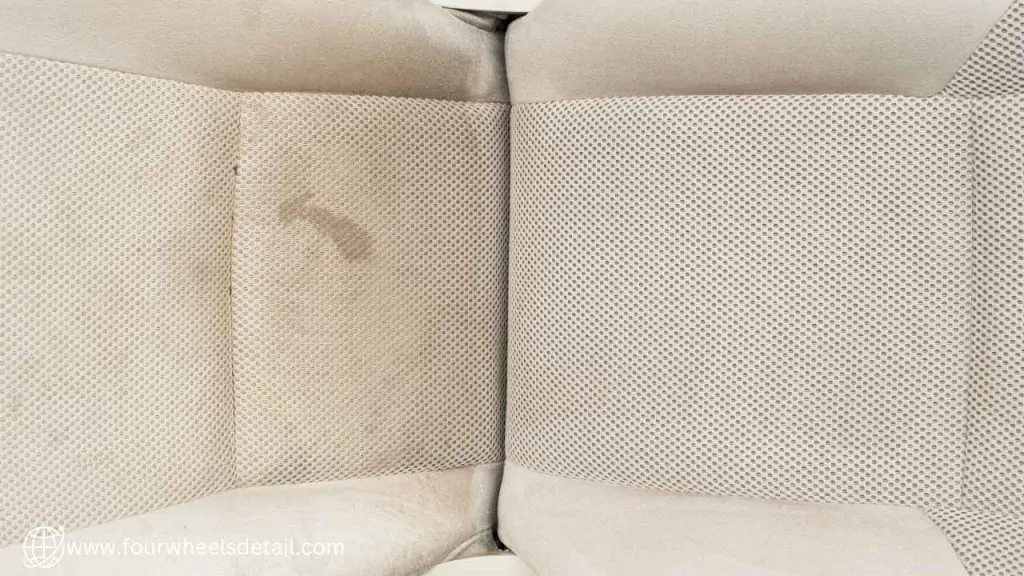Leather car seats can collect up to 70% more dust and dirt than fabric, with perforations trapping debris and moisture that leads to unpleasant odors and potential damage if left untreated. Regular cleaning not only preserves the luxury and comfort of leather but also extends its lifespan by preventing cracks and discoloration. Learn the essential steps to keep your perforated leather seats looking new—discover the best practices for deep cleaning and conditioning that every car owner should know!
Table of Contents
ToggleWhy Leather Seats with Holes Need Special Care
Perforated leather, also known as ventilated leather, requires special handling because the holes make it more prone to absorbing moisture and trapping dirt. Regular cleaning and a gentle approach are key to keeping these seats in good shape without clogging the holes or causing cracking.
Essential Cleaning Supplies
Here’s a list of supplies you’ll need:
- Leather cleaner (ideally pH-balanced and suitable for perforated leather)
- Microfiber cloths (gentle on leather and effective for cleaning)
- Soft-bristled brush or detailing brush to reach into the perforations
- Leather conditioner specifically designed for perforated surfaces (optional but recommended for lasting protection)
Step-by-Step Guide to Cleaning Leather Seats with Holes

Step 1: Vacuum Thoroughly
Start by vacuuming the seats with a soft brush attachment to remove loose dirt and debris from the surface and perforations. This helps prevent dirt from being rubbed deeper into the leather during the cleaning process. Focus on crevices and seams, as dirt tends to accumulate in these areas.
Step 2: Prepare a Cleaning Solution
Choose a gentle leather cleaner—pH-balanced is best—and follow the product’s dilution instructions if needed. Avoid harsh chemicals or excess water, as they can damage the leather and soak into the perforations, affecting the padding underneath.
Step 3: Apply the Cleaning Solution
Dampen a microfiber cloth with the cleaner and gently wipe the seat surface in circular motions, targeting the areas around the perforations. Use a soft-bristled brush to carefully clean inside the holes, but make sure the bristles are soft enough to avoid scratching the leather. Remember, it’s best to keep the cleaner on the cloth rather than spraying it directly onto the seats.
Step 4: Wipe Away Residue
After cleaning, take a clean, dry microfiber cloth and wipe down the seats to remove any remaining cleaning solution and dirt. Pay extra attention to the perforations to ensure they’re completely dry. This step prevents moisture from getting trapped, which could lead to mildew.
Step 5: Condition the Leather (Optional)
If your leather seats need conditioning, apply a high-quality leather conditioner. Use a small amount to prevent clogging the holes and apply it evenly with a microfiber cloth. Let the conditioner sit for a few minutes to absorb, then gently buff off any excess with a dry cloth. Conditioning not only keeps the leather supple but also protects it from cracking and fading.
Common Mistakes to Avoid
- Over-saturating with cleaner: Too much liquid can seep into the perforations and damage the padding.
- Using stiff brushes or abrasive tools: These can scratch and damage the leather surface.
- Drying with hot air: Using hair dryers or other hot air sources can cause the leather to shrink or crack over time.
Additional Tips for Long-Term Maintenance
- Avoid Harsh Chemicals: Always choose gentle, leather-specific products to maintain the integrity of the leather.
- Test First: Before using any cleaning solution, test it on a small, hidden area to make sure it won’t cause discoloration or damage.
- Regular Cleaning: Wipe down your seats every few weeks to prevent dirt buildup.
- Professional Cleaning for Stubborn Stains: For deep-set stains or tougher cleaning jobs, consider taking your car to a professional detailing service.
FAQs
Can I use a steam cleaner on perforated leather seats?
It’s best to avoid steam cleaners for perforated leather, as the moisture can seep into the holes, potentially damaging the leather and padding underneath.
What is the best way to remove pet hair from perforated leather seats?
Use a lint roller or a vacuum with a pet hair attachment. These tools work well to lift hair from the perforations without damaging the leather.
How often should I condition my perforated leather seats?
Condition your seats every 3–6 months to keep the leather soft and protected, especially in hot or dry climates where leather can dry out more quickly.
Can I use a vacuum cleaner to clean the perforations?
Yes, using a vacuum with a soft brush attachment is an excellent way to remove debris from the holes. Avoid pressing too hard to prevent damaging the leather.
If you want to learn more about car cleaning and detailing, you can look more on our website fourwheelsdetail.com

Hi! I’m Harry, With over a decade of experience in car detailing and cleaning, I specialize in restoring vehicles to their pristine best. Passionate about sharing expert tips on fourwheelsdetail.com, I’m here to help readers maintain their cars’ beauty, from paint protection to tackling tough stains.

